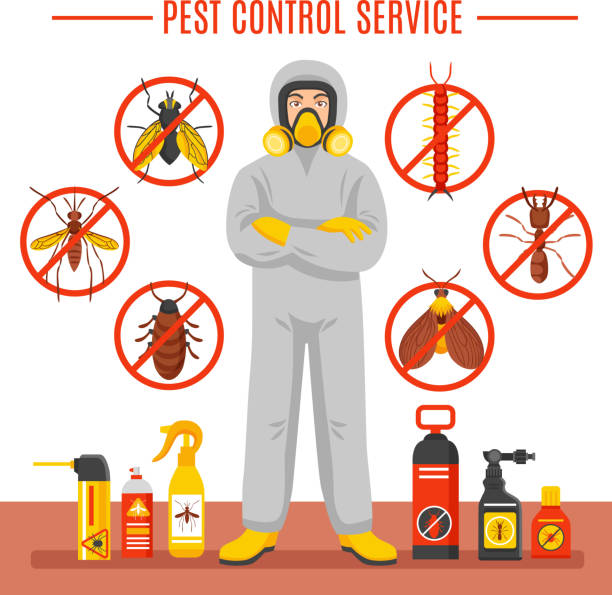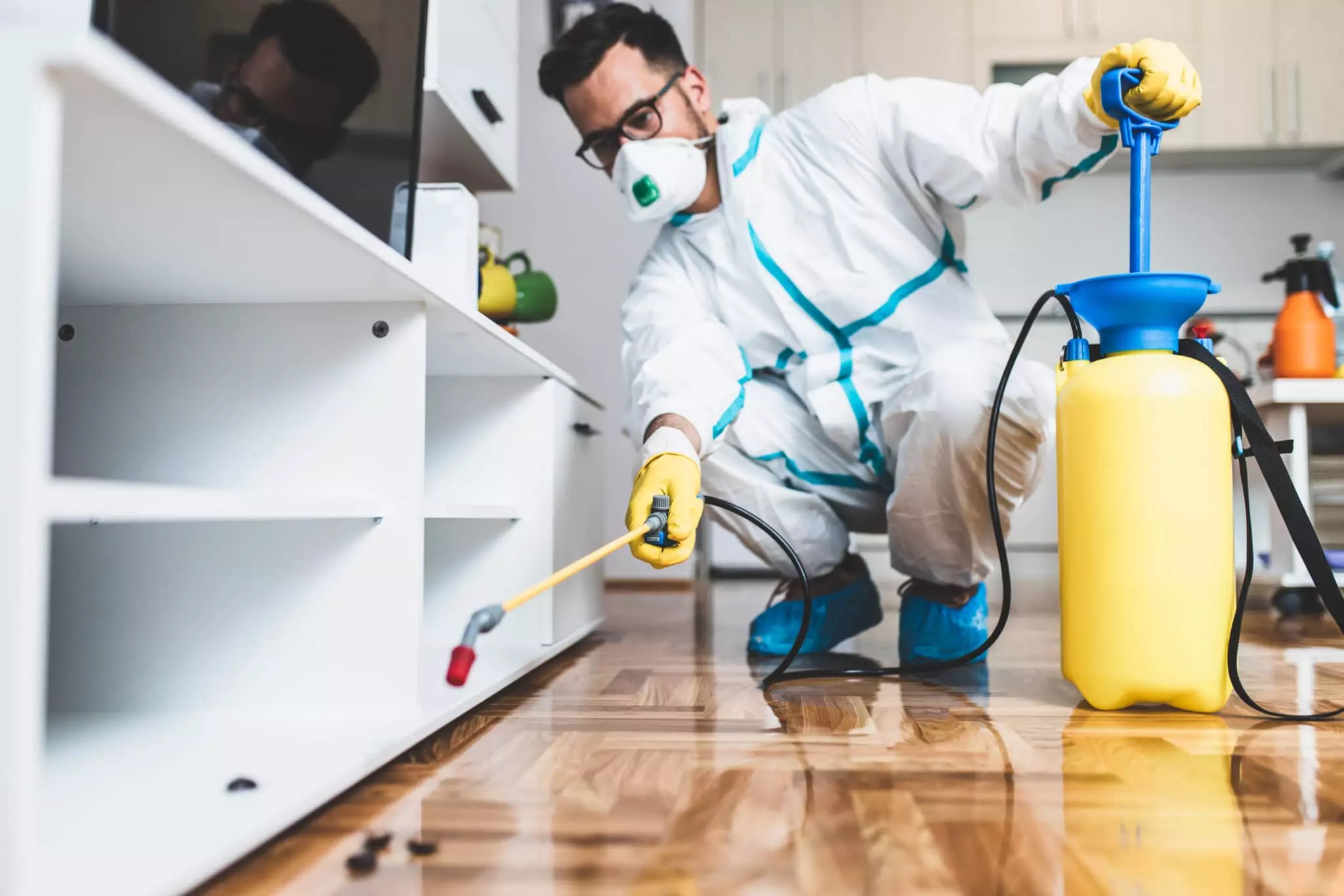Exploring Infestation and Therapy Techniques worldwide of Pest Control
The landscape of insect control incorporates a myriad of challenges, specifically as problems of common house pests proceed to develop. Comprehending the behaviors and reproductive patterns of these problems is important for developing efficient therapy strategies. By incorporating safety nets with advanced management strategies, such as Integrated Pest Monitoring (IPM), house owners can much better safeguard their settings. Nonetheless, the effectiveness of these approaches might vary significantly based on particular scenarios. What underlying elements add to the success or failing of these techniques in various settings?

Usual Family Vermin
When it comes to managing our living spaces, understanding usual home parasites is vital. These insects not just interrupt our comfort however can additionally present health and wellness dangers and damage residential property. One of the most widespread family pests include ants, roaches, rodents, termites, and bed insects.
Ants, often seen foraging in cooking areas, can infect food and establish huge colonies. Rats, consisting of computer mice and rats, can create architectural damage and bring conditions like hantavirus and salmonella.
Identifying the indicators of these insects, such as droppings, nests, or attack marks, is important for early treatment (Pest Control Lockhart). Appropriate cleanliness methods, sealing entry factors, and preserving a clutter-free atmosphere work preventative actions. By determining these usual household insects and understanding their habits, house owners can take positive actions to mitigate infestations, ensuring a much healthier living setting
Recognizing Pest Infestations
Parasite problems can escalate quickly, transforming a small annoyance into a significant problem otherwise addressed promptly. Understanding the nature of these invasions is essential for efficient management. Parasites can invade residential and business spaces for numerous factors, consisting of the search for food, shelter, or breeding premises. Common factors adding to invasions consist of inadequate hygiene, architectural vulnerabilities, and seasonal modifications that drive pests inside your home.
Identifying the kind of parasite is crucial, as different species display different actions and reproductive prices. Rodents may develop nests in concealed locations while bugs like cockroaches grow in wet atmospheres. Early discovery typically depends upon acknowledging indications such as droppings, gnaw marks, or uncommon sounds, which can suggest a problem before it ends up being extreme.
Environmental conditions likewise play a crucial duty in insect proliferation. Warm, moist environments can facilitate the rapid development of insect populaces, while modifications in landscape design or construction can inadvertently produce helpful environments. Normal evaluations and preventative actions are paramount to alleviating the risk of infestations. An enlightened strategy to recognizing these dynamics prepares for effective pest monitoring techniques in the future.
Treatment Methods and Methods
Reliable therapy approaches and methods are vital for minimizing pest invasions and recovering a secure atmosphere. A diverse technique is typically best, incorporating chemical, biological, and mechanical approaches tailored to the particular insect and the seriousness of the infestation.
Chemical therapies include using pesticides and herbicides, which can properly eliminate parasites. Proper application and adherence to safety guidelines are critical to reduce risks to Read More Here humans and non-target microorganisms. Integrated Insect Administration (IPM) urges the judicious use chemicals as a last resort, depending rather on surveillance and limit levels to establish intervention demands.
Biological control methods entail presenting natural predators or parasites to reduce parasite populaces. This technique is significantly prominent, specifically in agricultural setups, as it advertises environmental sustainability.
Mechanical approaches, such as traps and obstacles, give immediate relief from insects without introducing chemicals. Options include sticky catches for insects or physical obstacles for rodents.
Inevitably, the selection of treatment technique must consider the certain bug, the atmosphere, and prospective influences on human wellness and communities. A well balanced combination of these approaches can successfully manage invasions while promoting lasting imp source pest control options.
Safety Nets for House
Proactively attending to insect problems prior to they rise is important for preserving a healthy home environment (Pest Control Lockhart). Implementing efficient preventive actions can significantly lower the likelihood of invasions, ultimately securing both your home and wellness

Proper landscape design also plays an essential role in prevention. Keeping hedges and trees trimmed away from your house minimizes the opportunities of pests finding their way indoors. Additionally, guarantee that drain systems are working effectively to stop standing water, which can attract mosquitoes and various other bugs.
Last but not least, routine examinations are suggested. Consistently checking for indications of bug task permits early intervention. By taking on these safety nets, property owners can develop an atmosphere that is much less friendly to bugs, consequently boosting their overall top quality of life and decreasing the requirement for considerable insect control interventions.
Industrial Pest Control Techniques
An extensive method to commercial bug control is necessary for organizations intending to keep a risk-free and hygienic environment. Effective methods entail a mix of regular evaluations, worker training, and the execution of Integrated Pest Administration (IPM) techniques.
Normal evaluations enable very early discovery of pest activity, allowing for timely intervention. Companies ought to develop a regular timetable for these evaluations, concentrating on risky locations such as cooking areas, storage rooms, and waste disposal websites. Worker training is similarly crucial; staff needs to be informed on the indicators of pest invasions and the importance of reporting them promptly.
Executing IPM practices helps alleviate bug problems sustainably. This includes habitat alteration, such as sealing entry points and minimizing clutter, as well as using all-natural deterrents prior to resorting to chemical treatments.

In addition, collaborating with an accredited bug control company makes certain accessibility to expert knowledge and innovative treatment options. This collaboration can result in personalized pest control plans tailored to the certain requirements of the company, decreasing risks and improving general efficacy. Eventually, an aggressive and enlightened technique fosters a pest-free setting, protecting both public health and service reputation.
Final Thought
In conclusion, reliable insect control demands a thorough understanding of usual household pests and their actions, paired with targeted treatment methods. Implementing preventive steps along with therapy approaches such as Integrated Bug Monitoring and organic control improves the ability to minimize invasions.